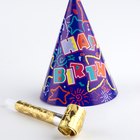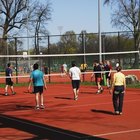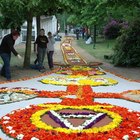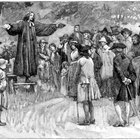
Todd Warnock/Photodisc/Getty Images
Training in verbal communication skills will serve a person well in the career world as well as in personal relationships. After providing groups with the principles of effective communication, give them an opportunity to put their learning into practice with some group activities. Select exercises that drive home the points you have made and give everyone an opportunity to listen and speak.
Giving Directions
This exercise encourages the speaker to choose precise language, provide adequate detail and logically order steps when giving instructions. Make a list of activities that require a series of steps to execute, such as tying a shoe, wrapping a gift and planting a flower. Write each task on a separate index card. One person in the group draws an index card and instructs the rest of the group on how to complete the task, without the use of any gestures and without saying what the task is. Ask one member of the group to act out the directions exactly as stated. Other members of the group listen and try to guess what the task is.
Checking Perceptions
By checking perceptions when you are engaged in a conversation, you affirm the person you are listening to. This perception-check exercise helps with developing good listening skills. The activity is for pairs, so if you want to do it in a group, have everyone find a partner. The first person needs to talk about any subject, stating about four to five sentences. The other should listen and, when the speaker is finished, repeat back to the speaker what he or she has heard, beginning with a phrase such as, “It sounds like…” or, “What I think I heard you say was…” If any misunderstandings exist, the speaker corrects and clarifies and the listener asks additional follow up questions, if needed. Then, the two switch roles and repeat the activity.
Eyewitnesses
This exercise shows how a story changes or gets distorted depending on the teller. How the activity plays out confirms research that indicates eyewitnesses to crimes view events filtered through their own past experiences rather than with an objective eye, according to the University of New Hampshire. Prepare for this role-playing exercise by typing up the following story so you can project it on screen at the end of the activity: 'A southbound truck was turning right while a northbound sports car was attempting to turn left. When the two drivers figured out they were trying to turn into the same lane, they both honked but continued to turn without slowing down. In fact, the sports car seemed to speed up just before the crash.'
Send four witnesses and a "police officer" out of the room and then read the scenario above to a witness in the room, who is not allowed to take notes. Witnesses outside the room should have no knowledge of the story. Call in one of the witnesses from outside the room and ask the witness who has just heard the story to tell it to the second witness. After this, call in a third witness and ask the second to tell the story to the third. Continue until all the witnesses have heard the story. Finally ask the police officer to come in and record information from the last witness on a white board or chalkboard, if possible. Compare the story the police officer records to the original story. Ask participants and observers to describe how they felt during this exercise. Discuss what conclusions they have drawn from this activity.
Related Articles

Ideas for Adult Bible Games

Games to Play for Teaching the ...

Get Acquainted Activities for Adults

Game Ideas for a 50th Anniversary Party

How to Play a Trivia Game at a Birthday ...

Children's Beatitude Activities

Youth Group Activities With a Message

How to Play Baby Outburst Game for Baby ...

Fun Games for Sunday School Kids Ages ...

Follow-the-Leader Children's Games

How to Introduce a Wedding Party

Table Game Ideas for a Team Building ...

Christian Team Building Exercises & Ice ...

Christian Games With Spiritual Lessons

Family Games for a Church Fellowship

Catholic Confirmation Retreat Activities

Adult Games for a 21st Birthday Party

Contemporary Tenebrae Service Ideas

Children's Games to Teach About ...

How to Play the Hugging Game
References
Writer Bio
Ann Wolters has been a writer, consultant and writing coach since 2008. Her work has appeared in "The Saint Paul Almanac" and in magazines such as "Inventing Tomorrow" and "Frontiers." She earned a Master of Arts in English as a second language from the University of Minnesota.
Photo Credits
Todd Warnock/Photodisc/Getty Images